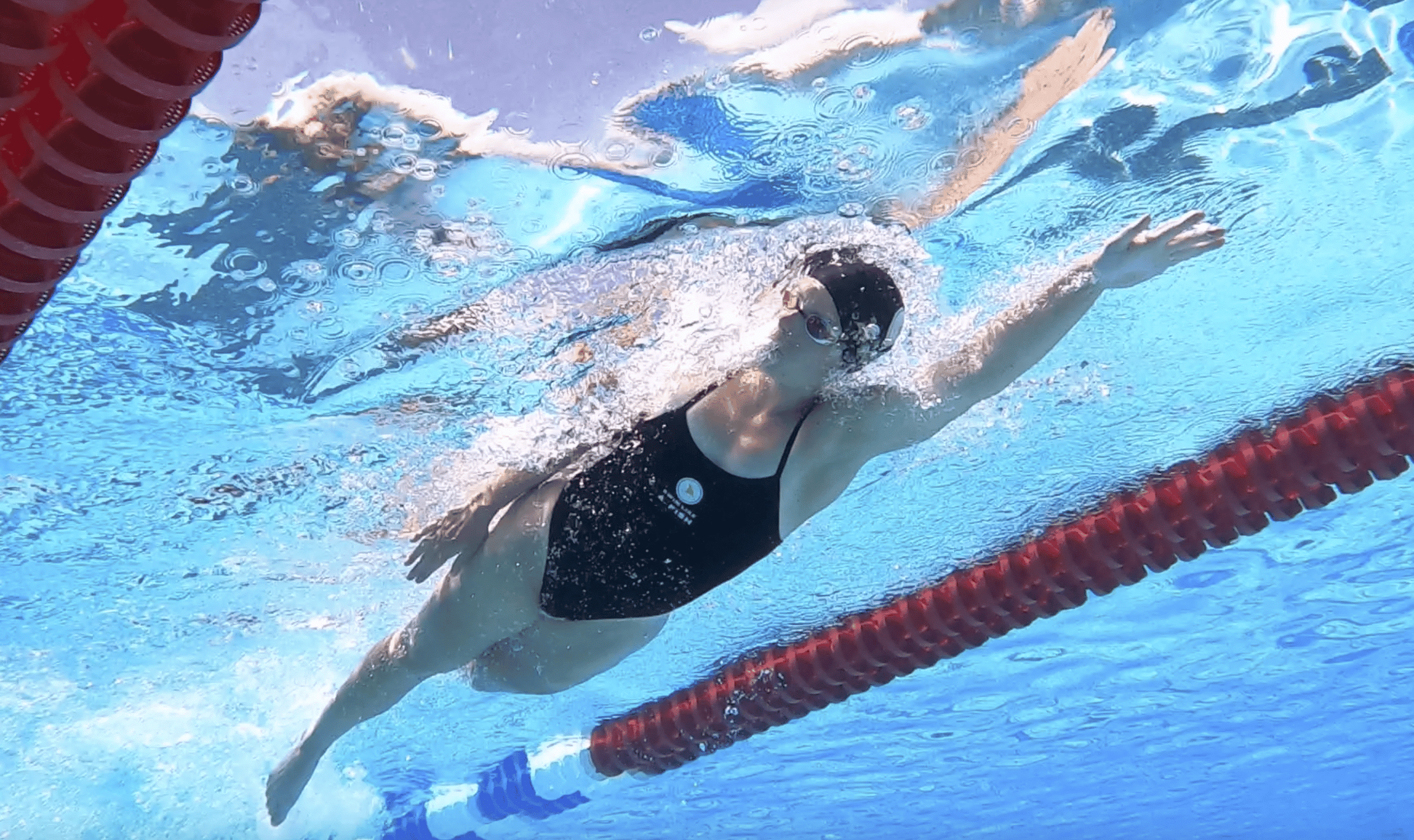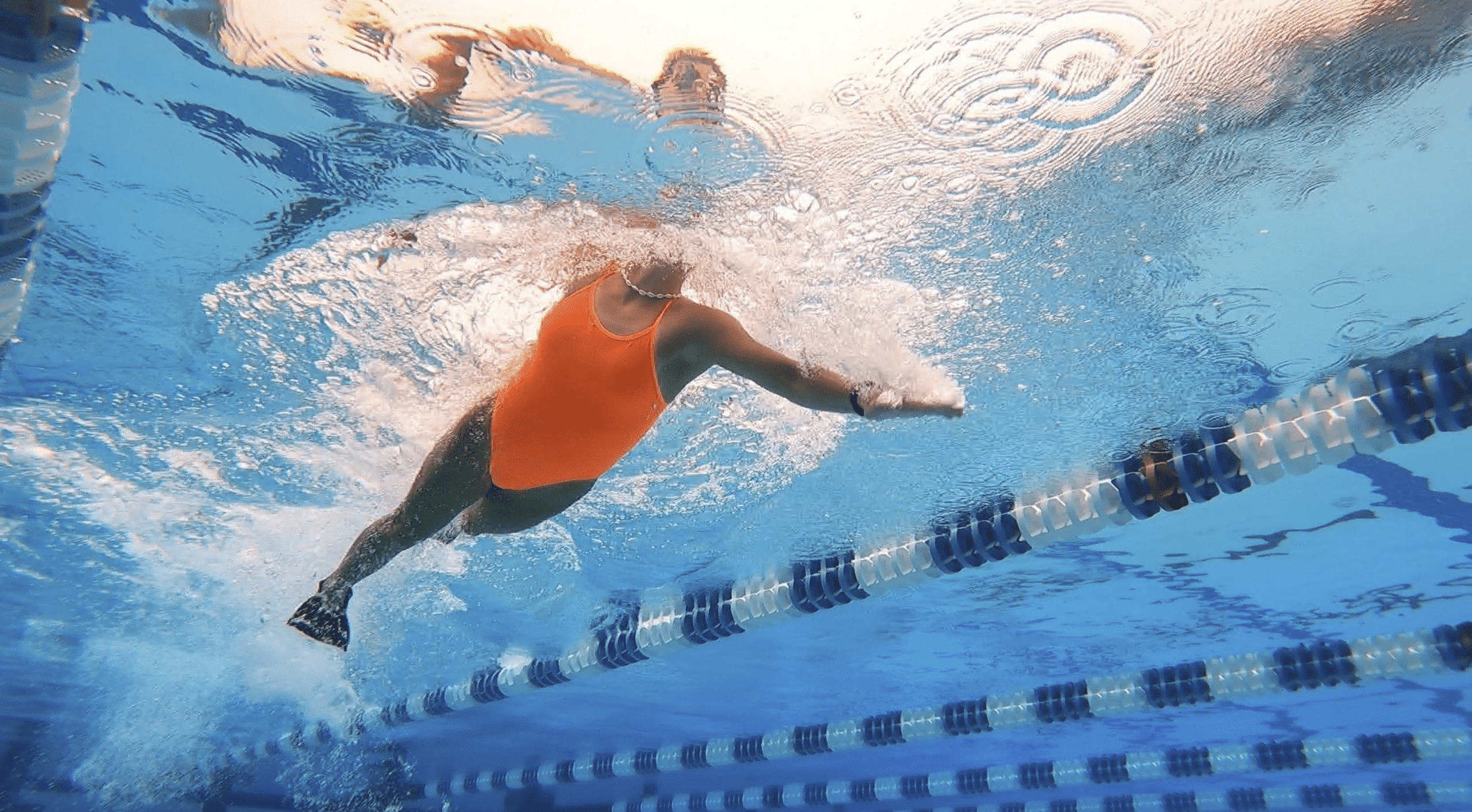Welcome to Part II of our breathing series! If you read How to Breathe During Swimming – Part I, you already know the proper timing of inhaling and exhaling while swimming Freestyle and also, why that breathing strategy is important.
This week we dive a little deeper into the physiology of why breathing consistently while swimming helps us maintain speed and avoid fatigue, as well as when we “hit a wall” and what we should do about it. Unfortunately, we don’t have gills to allow us to breathe underwater. So learning the proper breathing technique and strategy when you’re swimming will significantly improve your fitness level and swim speed!
If you haven’t read Part I of How to Breathe During Swimming or need to refresh, [CLICK HERE]. Otherwise, let’s get started.

Everyone has a Maximum Heart Rate (MHR) value. While we all don’t know our exact values, we can estimate our MHR by the equation:
220 – [Your Current Age] = Est. MHR (BPM)
With this value, coaches and exercise practitioners are able to design training programs based on percentages of your Estimated MHR or Heart Rate Zones (HR Zones).
Think about the last time you ran on a treadmill (or elliptical). Each machine (for the most part) has a sticker with a bunch of numbers on it regarding HR zones. You’ll see a number under the “Fat Burning Zone”, “Weight Control Zone”, “Aerobic Zone”, and anything in between. These zones are all based off of what percentage of your Est. MHR value, your body is working at that time AND what energy system is supplying the fuel for you to train at that zone.
General Heart Rate Zone Guidelines: 70-85% of your Est. MHR is Aerobic 85-95% of your Est. MHR is Anaerobic.
For example: My Est. MHR is 193bpm. Yes, I am 27 years old. With this Est. MHR , if I run a 5K with an average HR of 160bpm. I worked at 77% of my Est. MHR (165/193=.854). 77% is in the aerobic zone.
Why Should I Care About Heart Rate Zones When I’m Swimming?
HR Zones are important because they are the basis for most aerobic training programs. Aerobic by definition means in need of oxygen.
When you swim, your muscles get fuel from the aerobic energy system. Swimming is an aerobic sport. With limited oxygen intake, your body can still swim, but not as fast and not as long. That’s the basis for aerobic training!
When you don’t have enough oxygen to fuel your aerobic energy system, your body initiates the use of the anaerobic energy system. The anaerobic energy system is by definition – without the need for oxygen. Overall, oxygen is the key difference between the anaerobic and aerobic energy systems.

Beyond that, every swimmer has a threshold amount of oxygen they can deliver, per minute, to their exercising muscles. This threshold is called your VO2 max. The higher your VO2 max, the more oxygen you can deliver to your muscles and vice versa.
If you are swimming below your VO2 max, you are still using your aerobic energy system. If you speed up and your demands for energy increase/surpass your VO2 max level, your body will start fueling your muscles through your anaerobic energy system.
While this is all good, there is one major problem with the anaerobic energy system. That is its byproduct called Lactate.
What is Lactate?
Lactate is a fancy word for the compound that is derived from the anaerobic energy system.
Lactate isn’t a big deal, as long as your body can break it down and shuttle it out. But if your body exceeds it’s Lactate Threshold, you will “hit a wall”.
So if I combine what’s happening in the aerobic and anaerobic energy systems while swimming, the key to breathing deals with: maximizing your oxygen intake while keeping your lactate levels as low as possible.
That means if you are swimming shorter, more intense events (sprints), you should breathe more often at the beginning of your race to prolong the time it takes for your lactate to build up.
And for longer, less intense (distance events), you should breathe regularly throughout the race (i.e. every 1, 2, or 3) to keep supplying enough oxygen to your aerobic energy system.
You will never be able to change the fact that your body needs oxygen. But you can change how effectively your body uses the oxygen available. Now get to training, as that is the closest thing to gills we will ever have!
Want to read the last part of this series, [CLICK HERE].
Until next week,
Abbie Fish

3 Responses